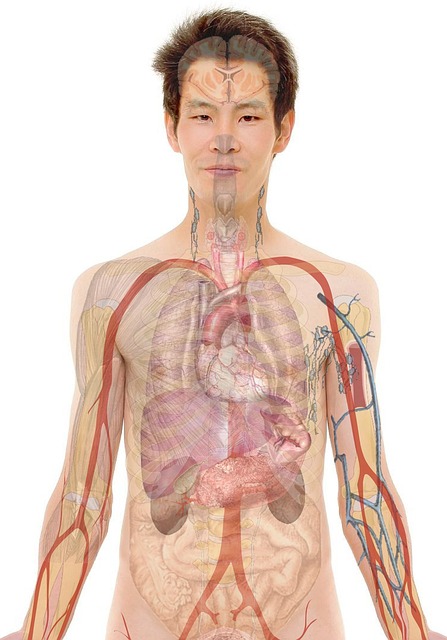Non-invasive body contouring treatments, including laser therapy, radiofrequency, and vacuum/HIFU techniques, offer effective solutions for cellulite reduction. These procedures stimulate collagen production, target fat cells, and improve skin elasticity without surgery or lengthy recovery. While generally safe when administered by qualified professionals, potential risks like redness, swelling, and discomfort may occur. Choosing a reputable clinic with experienced staff and positive reviews is crucial for optimal results. Proper post-treatment care, including hydration, diet, exercise, sunscreen use, and avoiding harsh substances, enhances outcomes and ensures skin health.
Tired of battling stubborn cellulite? Discover how non-invasive body contouring can be a game-changer. This comprehensive guide explores effective treatments, safety considerations, and expert advice for achieving smoother, firmer skin. From understanding the causes of cellulite to finding the right clinic, we’ll navigate your journey towards confidence. Uncover the benefits, common techniques, and post-treatment care tips for optimal results with non-invasive body contouring.
Understanding Cellulite: Causes and How Non-Invasive Body Contouring Can Help

Cellulite, characterized by its dimpled appearance on the skin, is a common concern for many, often affecting areas like the thighs, buttocks, and abdomen. Understanding its causes is essential in addressing it effectively. Cellulite forms when fat cells push against the connective tissue under the skin, creating a lumpy texture. This condition is more prevalent in women due to hormonal factors and genetic predisposition.
Non-invasive body contouring offers a promising solution for managing cellulite without surgery or extended recovery periods. Treatments like laser therapy, radiofrequency, and electromagnetic energy can stimulate collagen production, improve skin elasticity, and reduce the appearance of dimples. By targeting specific areas, these non-invasive procedures help sculpt and smoothen the skin, providing visible results without the risks associated with more aggressive methods.
Benefits of Non-Invasive Body Contouring Treatments for Cellulite Reduction

Non-invasive body contouring treatments offer a promising solution for those seeking to reduce cellulite and improve their skin texture. Unlike surgical procedures, these advanced technologies provide a safer and more comfortable alternative, allowing individuals to achieve desired results without incisions or extensive recovery periods. One of the key benefits is their ability to target specific problem areas, such as thighs, buttocks, and abdomen, where cellulite often accumulates due to poor circulation and collagen degradation.
These treatments work by stimulating collagen production, enhancing skin elasticity, and improving lymphatic drainage, which helps reduce the appearance of orange-peel skin. By promoting healthy cell turnover and breaking down fat deposits, non-invasive body contouring can provide noticeable improvements in skin texture and overall body shape. Additionally, many procedures are quick, usually lasting less than an hour, making them convenient for individuals with busy schedules who still desire effective cellulite reduction.
Common Non-Invasive Techniques for Targeting Cellulite

Cellulite, characterized by bumpy, dimpled skin, has long been a concern for many. While traditional methods like diet and exercise can help reduce its appearance, some individuals seek more targeted approaches. Non-invasive body contouring techniques have gained popularity as effective ways to combat cellulite without incisions or lengthy recovery periods. One such method is radiofrequency (RF) treatments, which use heat energy to stimulate collagen production, improving skin elasticity and smoothing out dimpled areas. Another popular option is laser therapy, which targets fat cells and encourages lymphatic drainage, contributing to a more even skin texture.
Ultrasound technology is another non-invasive body contouring tool that employs high-intensity focused ultrasound (HIFU) to break down fat cells while preserving surrounding tissue. This method offers significant results in reducing cellulite and shaping problem areas. Additionally, some treatments combine multiple techniques, like RF and laser, for comprehensive skin rejuvenation. These non-invasive approaches provide individuals with accessible options to achieve smoother, more toned skin without the risks associated with surgical procedures.
Safety and Side Effects: What You Need to Know About Non-Invasive Body Contouring

Non-invasive body contouring treatments have gained popularity as individuals seek effective ways to reduce the appearance of cellulite. However, before undergoing any procedure, it’s essential to understand the safety aspects and potential side effects. These non-invasive methods, such as laser therapy, radiofrequency, or vacuum technology, are designed to target fat cells and improve skin texture without breaking the skin’s surface. While generally considered safe when performed by qualified professionals, there are still risks involved.
Common side effects may include temporary redness, swelling, bruising, and mild discomfort at the treatment area. In rare cases, more severe reactions like skin irritation or burns might occur, especially if the procedure is not executed correctly. It’s crucial to choose a reputable clinic that employs trained staff who can assess your suitability for these treatments and provide guidance on managing any post-procedure symptoms.
Finding the Right Clinic and Professional for Your Cellulite Treatment Journey

Choosing the right clinic and professional is a vital step in your cellulite treatment journey. Opt for establishments offering non-invasive body contouring treatments, as they are safer and more effective than invasive procedures. Research their reputation, experience, and the types of technology they use; you want a place with state-of-the-art equipment and highly trained staff.
Check reviews from previous clients to gauge their satisfaction levels and the results they achieved. Ask about consultation sessions to discuss your concerns, goals, and the best treatment plan for your body type. A good clinic should make you feel comfortable, provide realistic expectations, and offer aftercare guidance to ensure optimal results and maintain your new silhouette.
Post-Treatment Care and Maintenance Tips for Optimal Results

After your non-invasive body contouring treatment, proper care and maintenance are essential for achieving and maintaining optimal results. It’s crucial to follow your practitioner’s post-treatment instructions carefully. This may include recommendations for hydration, diet, and exercise. Staying well-hydrated helps flush out toxins and promotes skin elasticity, while a balanced diet rich in nutrients supports the body’s natural healing process. Regular, gentle exercise, such as walking or yoga, can also aid in enhancing circulation and lymphatic drainage, further improving results.
Additionally, protecting your treated areas from excessive sun exposure is vital to prevent hyperpigmentation. Using sunscreen daily and avoiding harsh chemicals or exfoliants that could irritate the skin are important measures. Remember, consistent care will ensure your treatment delivers the best possible outcomes.
